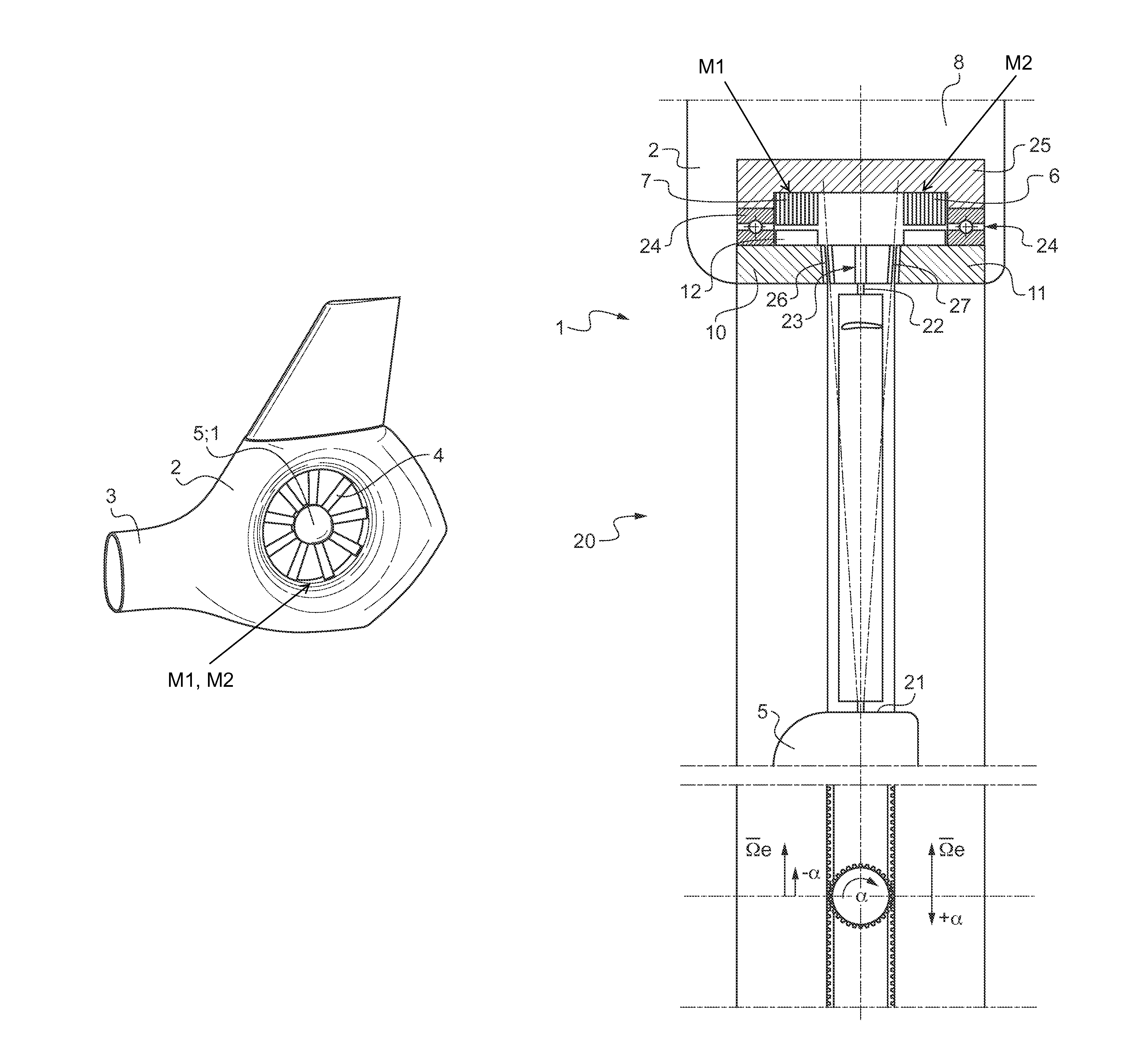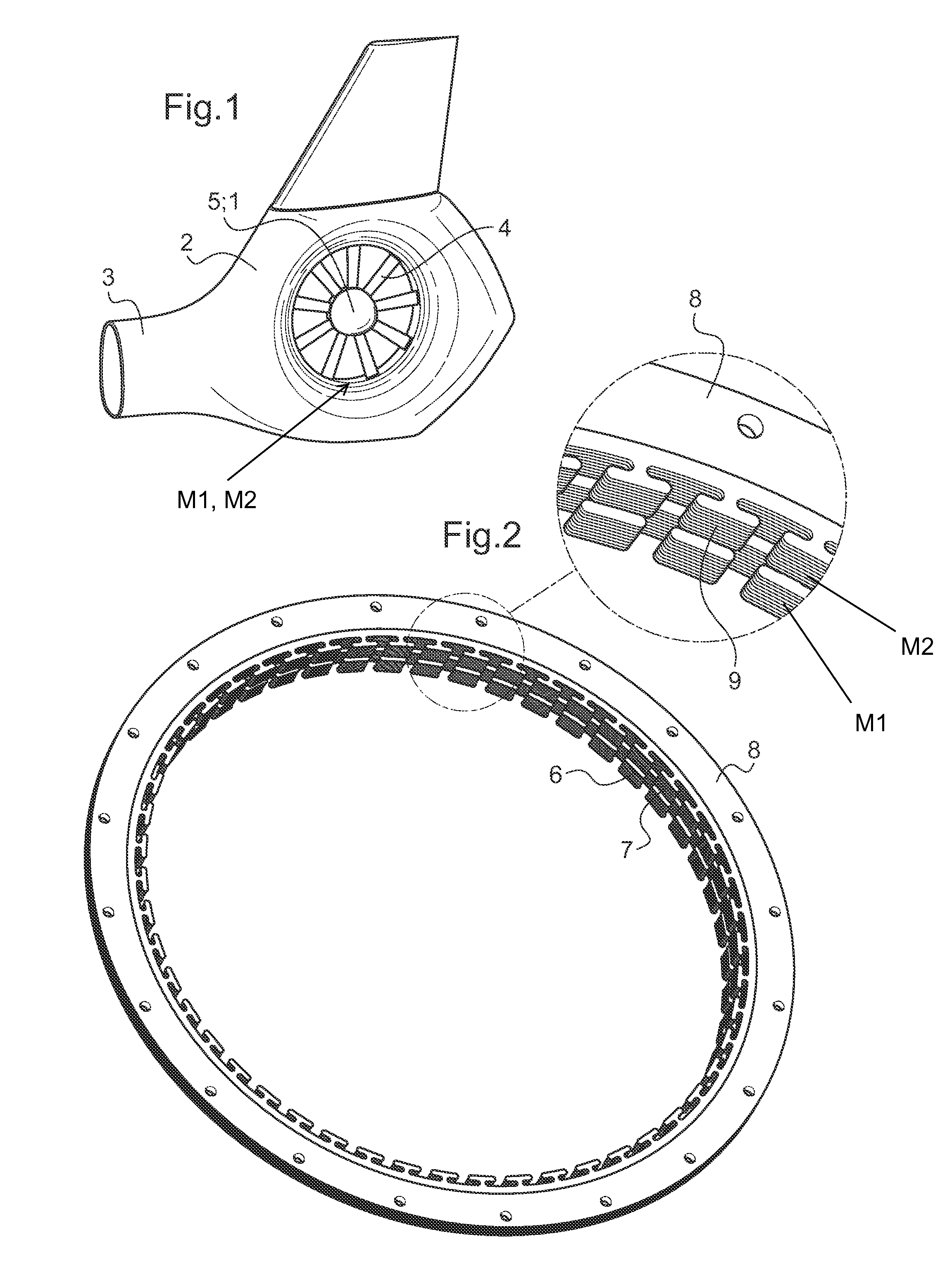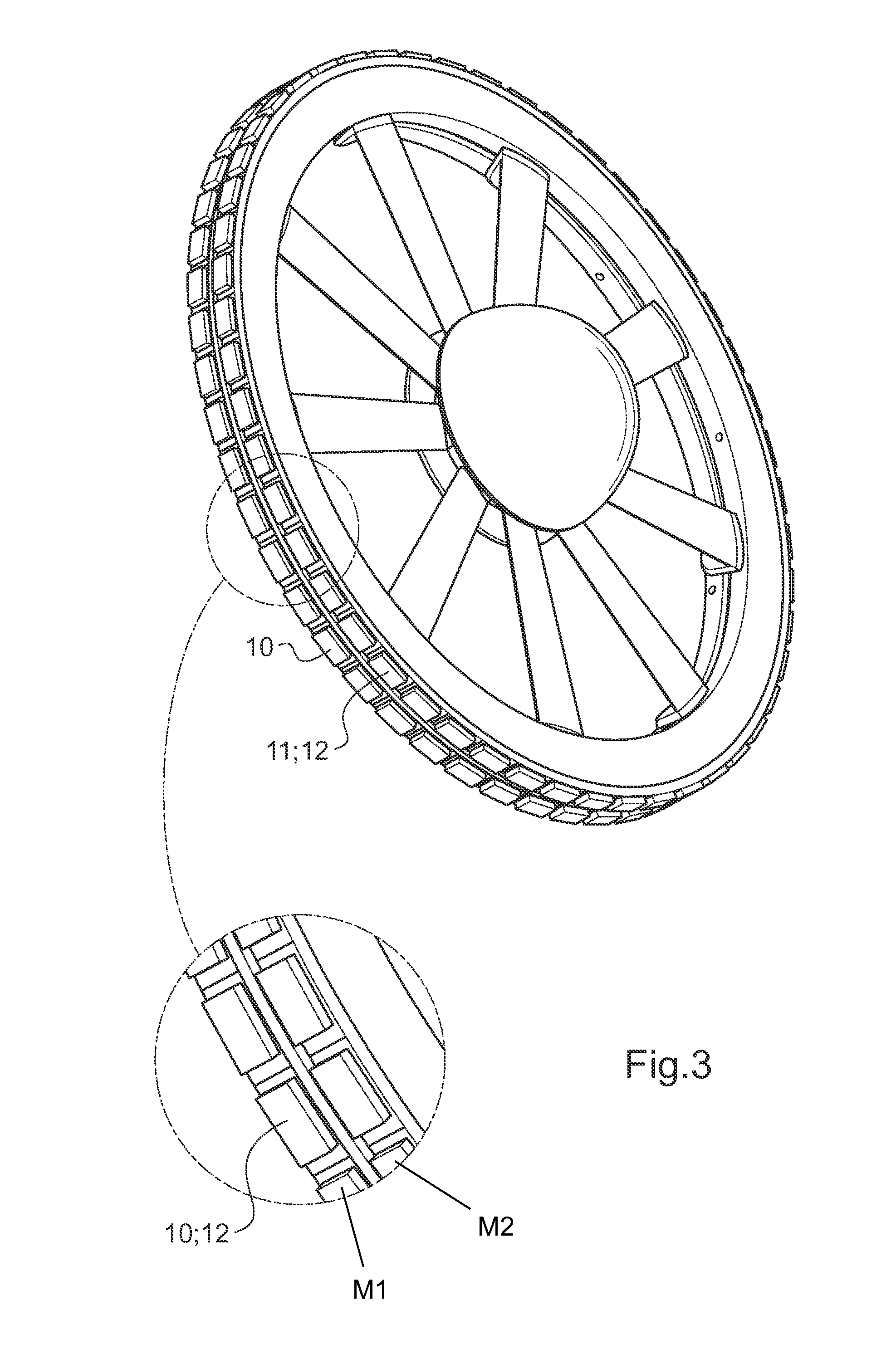Electrical powered tail rotor of a helicopter
a technology of electric power and tail rotor, which is applied in the direction of machines/engines, magnetic circuit shapes/forms/construction, transportation and packaging, etc., can solve the problems of increasing rotor noise, introducing drag force, and adding weight, and achieves the effect of improving efficiency
- Summary
- Abstract
- Description
- Claims
- Application Information
AI Technical Summary
Benefits of technology
Problems solved by technology
Method used
Image
Examples
Embodiment Construction
[0034]According to FIG. 1 a tail rotor 1 is arranged within a housing 2 of a helicopter's tail boom 3. Blades 4 of the tail rotor 1 are centrally supported by a hub 5. Hub 5 is essentially ball shaped towards an inlet side and essentially flat towards an outlet side of the tail rotor 1.
[0035]According to FIG. 2 two coaxial stators 6, 7 are provided on the inner circumference of a torus 8 of a brushless electrical motor assembly composed of two permanent magnet energized synchronous motors M1, M2 with a plurality of poles 9 on each of the two coaxial stators 6, 7.
[0036]The poles 9 on each of the two coaxial stators 6, 7 are connected to supply means (not shown) for electrical power. Power semiconductors (not shown) and microcontrollers (not shown) provide for two multiphase inverters (not shown) for precise control of the two brushless synchronous motors M1, M2.
[0037]According to FIG. 3 the electrical motor assembly is composed of one rotating component 10, 11 for each of said two sy...
PUM
 Login to View More
Login to View More Abstract
Description
Claims
Application Information
 Login to View More
Login to View More - R&D
- Intellectual Property
- Life Sciences
- Materials
- Tech Scout
- Unparalleled Data Quality
- Higher Quality Content
- 60% Fewer Hallucinations
Browse by: Latest US Patents, China's latest patents, Technical Efficacy Thesaurus, Application Domain, Technology Topic, Popular Technical Reports.
© 2025 PatSnap. All rights reserved.Legal|Privacy policy|Modern Slavery Act Transparency Statement|Sitemap|About US| Contact US: help@patsnap.com



